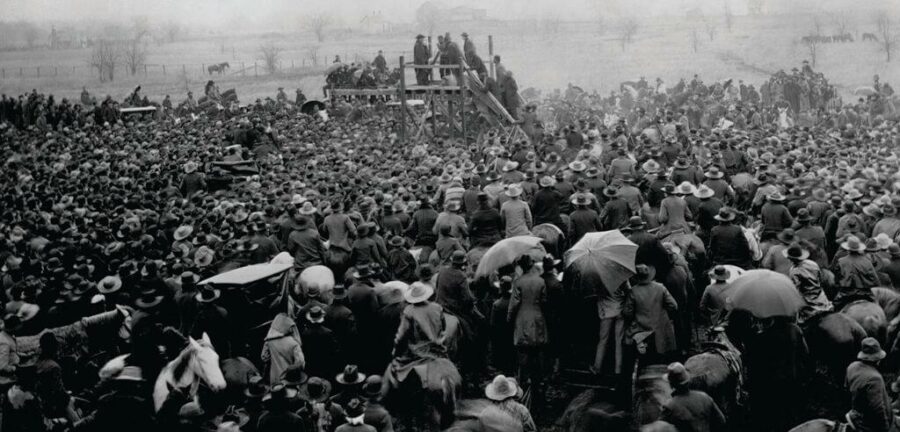
By Michael Coard, The Philadelphia Tribune
Exactly 120 years ago on Feb. 7, 1904, which was twenty-two years before the precursor to Black History Month was first celebrated in 1926, one of America’s largest and most gruesome lynching events took place.
As reported in the Los Angeles Herald on Feb. 8, 1904, [52-year-old] Luther Holbert and … [an unnamed woman] were burned at the stake … by a mob of 1,000 [white, mostly Christian] persons …. [in Doddsville, Mississippi and it occurred] in the shadow of the negro church here.”
And as documented by Equal Justice Initiative, a pro bono litigation organization headed by prominent civil rights attorney Bryan Stevenson, “According to an eyewitness account published in the Vicksburg, Mississippi Evening Post, Mr. Holbert and the unnamed Black woman were tied to trees while the funeral pyres were prepared. They were then forced to hold out their hands and watch as their fingers were chopped off, one at a time, and distributed as souvenirs. Next, the same was done to their ears. Mr. Holbert was then beaten so badly that his skull was fractured and one of his eyes hung by a shred from the socket. The lynch mob next used a large corkscrew to bore into the arms, legs, and bodies of the two victims [while they were still alive and fully conscious], pulling out large pieces of raw flesh. The victims reportedly did not cry out, and they were finally thrown on the fire and … burn[ed] to death. The event was described as a festive atmosphere, in which the … spectators enjoyed deviled eggs … [and] lemonade ….”
Stop and pause for a few seconds and think about what those deviled-egg-eating devils did. Imagine that Black man and woman’s absolute terror and excruciating pain.
Whenever you think you’ve heard the worst of America’s gruesomely nightmarish racist brutality, you often find out that it’s much worse than you had imagined.
Oh, and by the way, only one person- a man named C. C. Eastland- among the 1,000 was ever arrested. But on Sept. 22, 1904, a judge summarily dismissed all charges.
Also, I should mention that the person who led that lynch mob was James Eastland who had a son also named James Eastland. That son later became Mississippi’s longest-serving United States Senator and spent his entire political career virulently opposing every civil rights bill introduced in Congress.
As pointed out by the NAACP, “From 1882 to 1968, [there were] 4,743 lynchings … in the United States … . The highest number of lynchings during that time period occurred in Mississippi, with 581 recorded” and two of them were Holbert and the unnamed woman.
As noted in the seminal Black’s Law Dictionary, which is used daily by law professors, judges, lawyers and law students all across the country, lynching is defined as “the action of unofficial persons … who seize [someone] … suspected of crimes … and inflict summary punishment upon them ….” Accordingly, the last official lynching (that the public is aware of based on what has been published in major media outlets) was just four years ago- during Black History Month- on February 23, 2020 when 25-year-old Ahmaud Arbery in Satilla Shores, Ga. was hunted down and shot to death.
You would think that this country had long ago outlawed lynching based on what happened from 1882-1968 (and earlier), but it didn’t. In fact, it wasn’t until March 29, 2022- less than two years ago with the enactment of the Emmett Till Anti-Lynching Act- that lynching became a federal crime for the first time ever.
The Lynching in America Website
Bruce Gerencser, 68, lives in rural Northwest Ohio with his wife of 47 years. He and his wife have six grown children and sixteen grandchildren. Bruce pastored Evangelical churches for twenty-five years in Ohio, Texas, and Michigan. Bruce left the ministry in 2005, and in 2008 he left Christianity. Bruce is now a humanist and an atheist.
Your comments are welcome and appreciated. All first-time comments are moderated. Please read the commenting rules before commenting.
You can email Bruce via the Contact Form.
